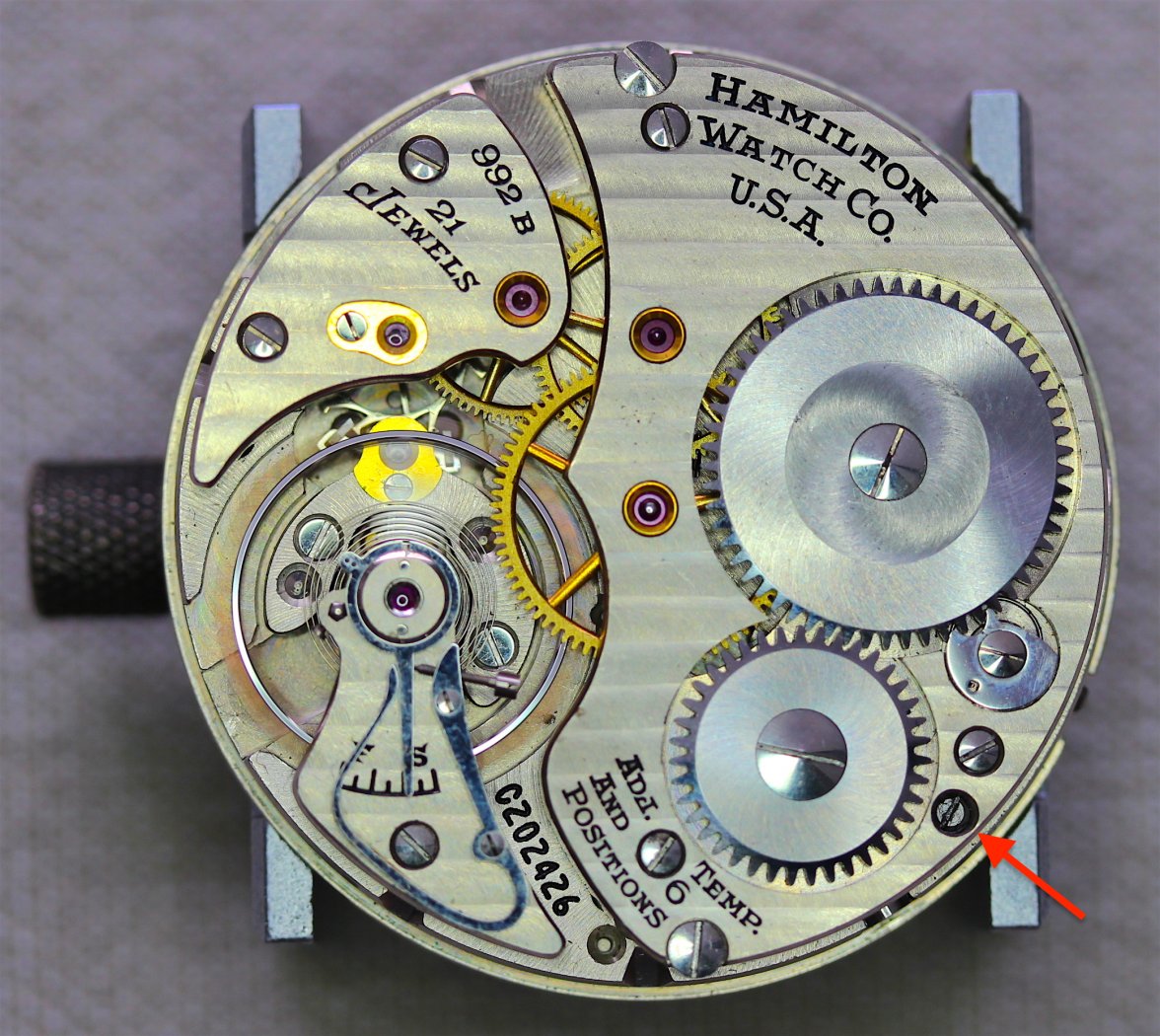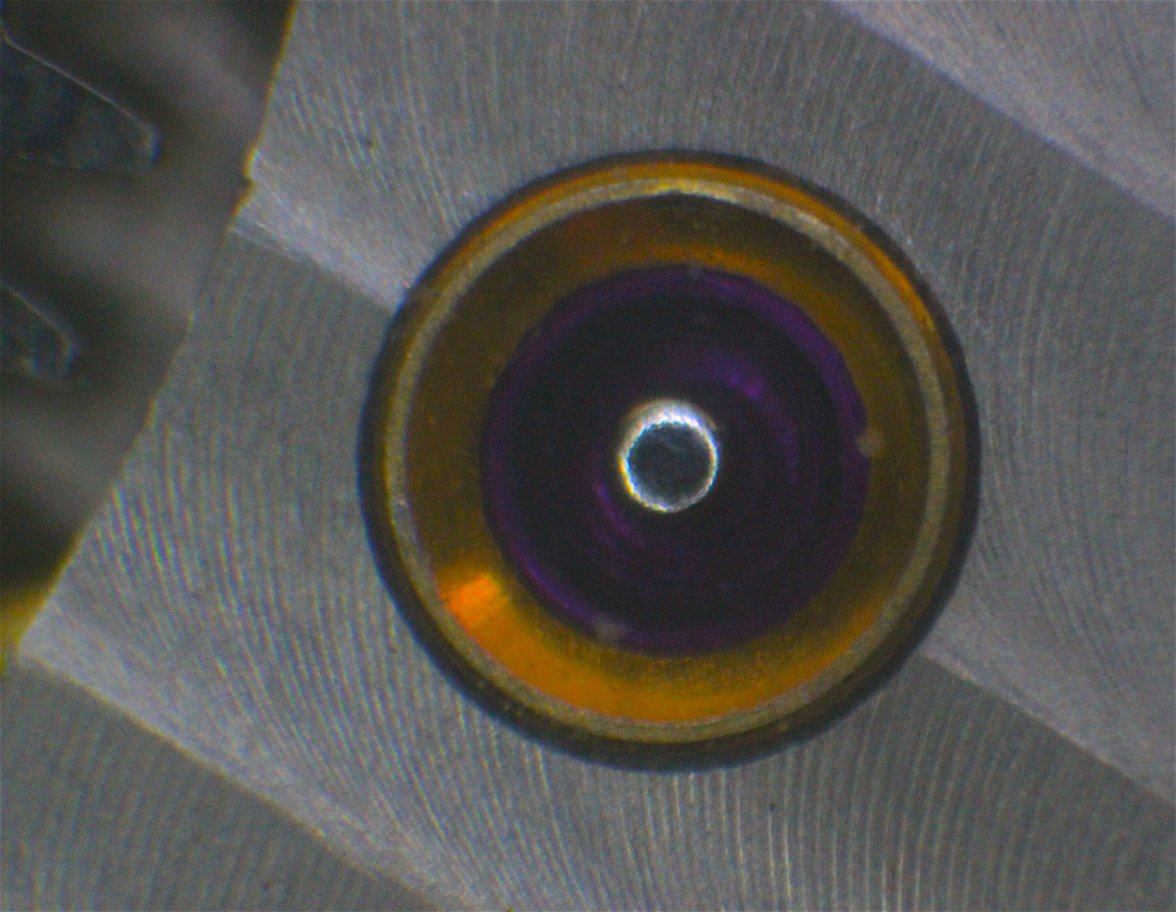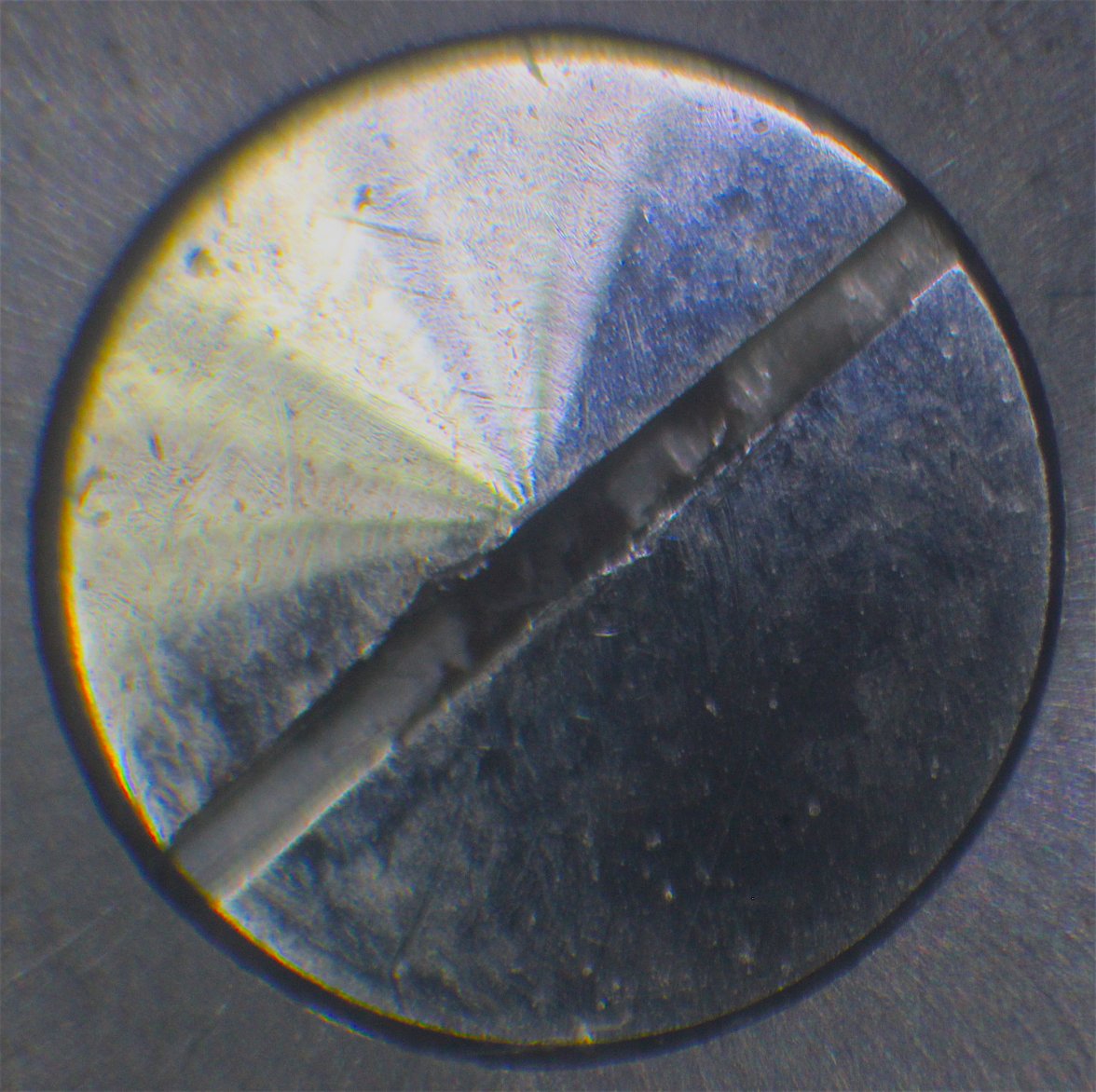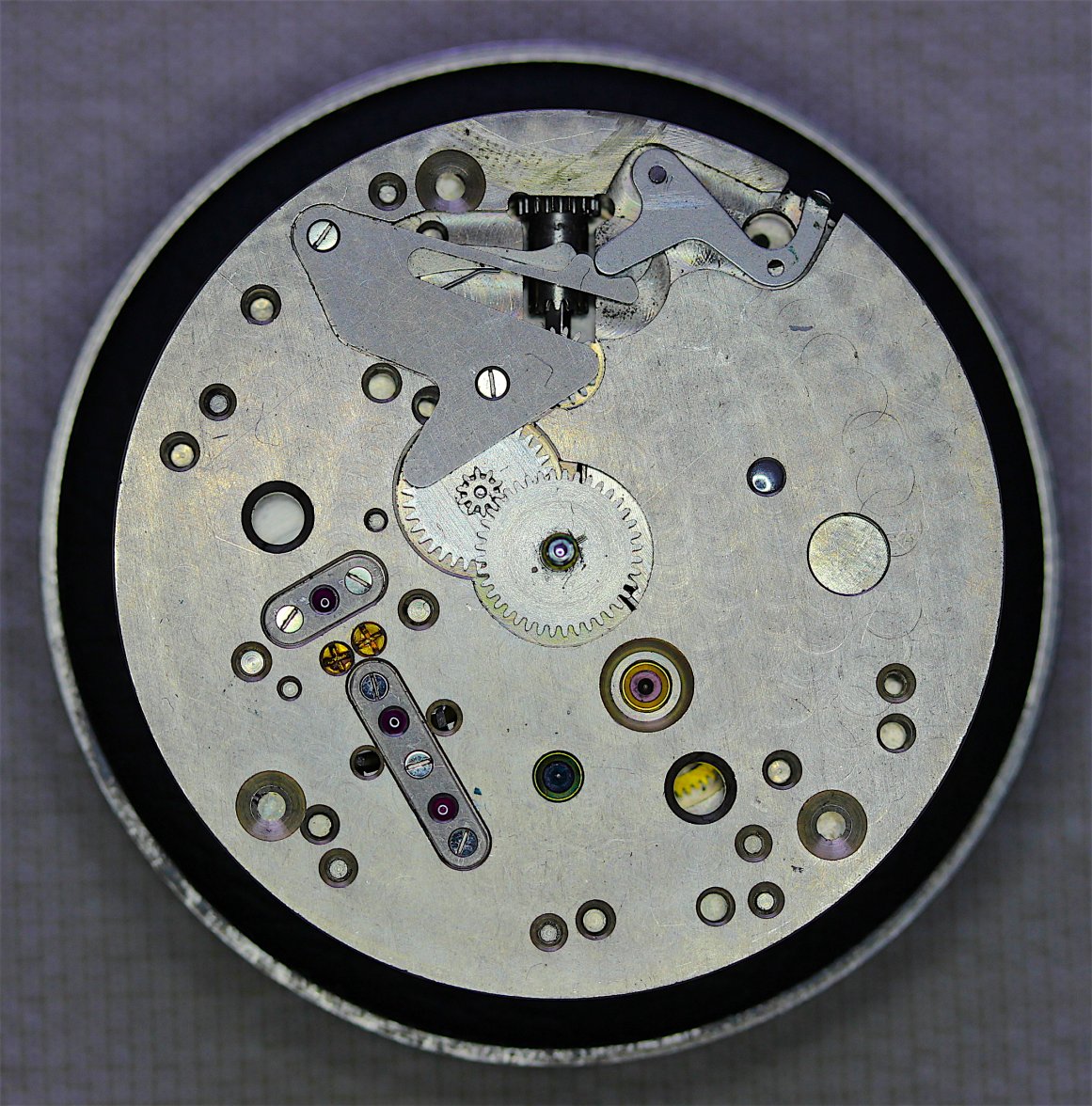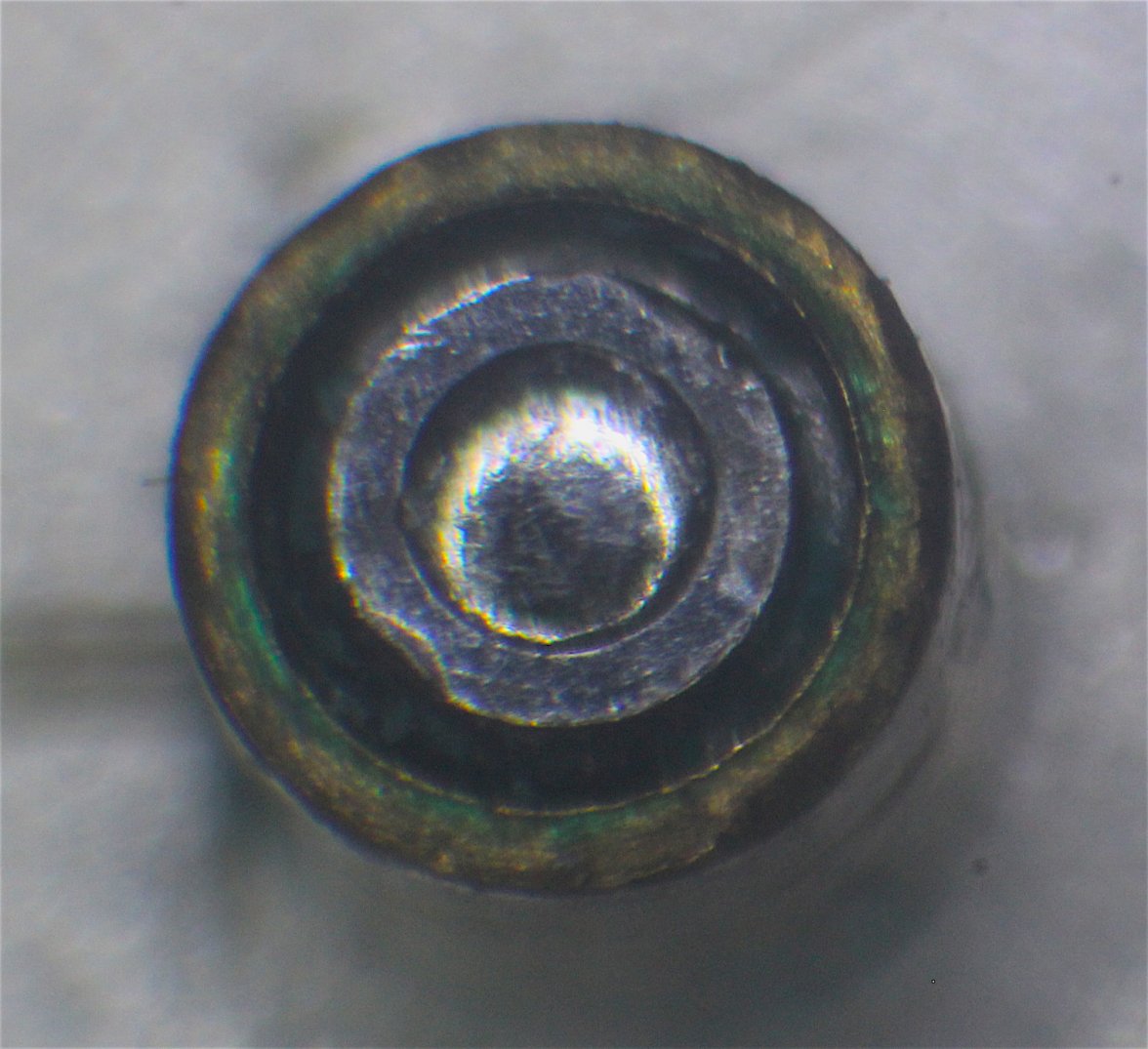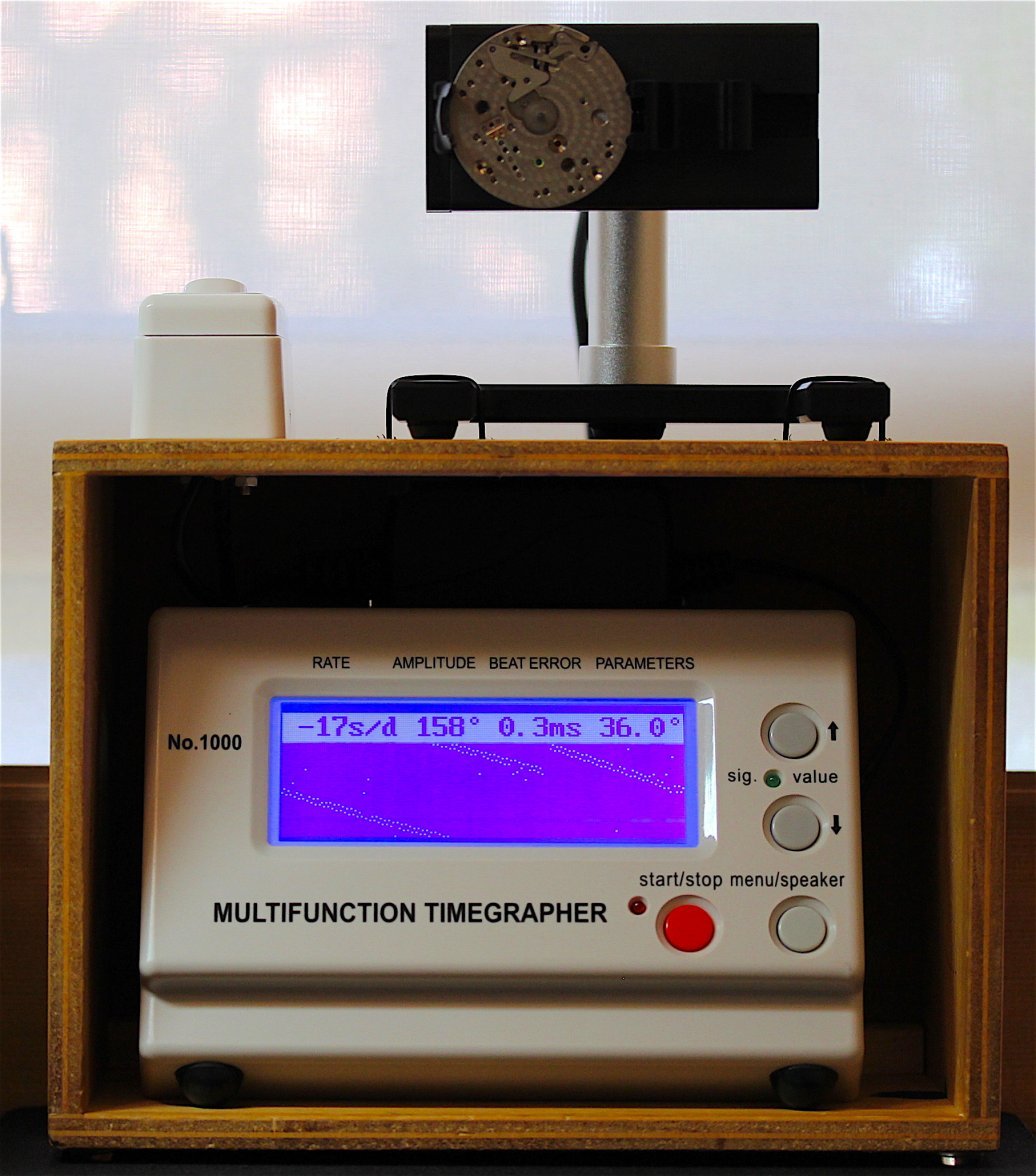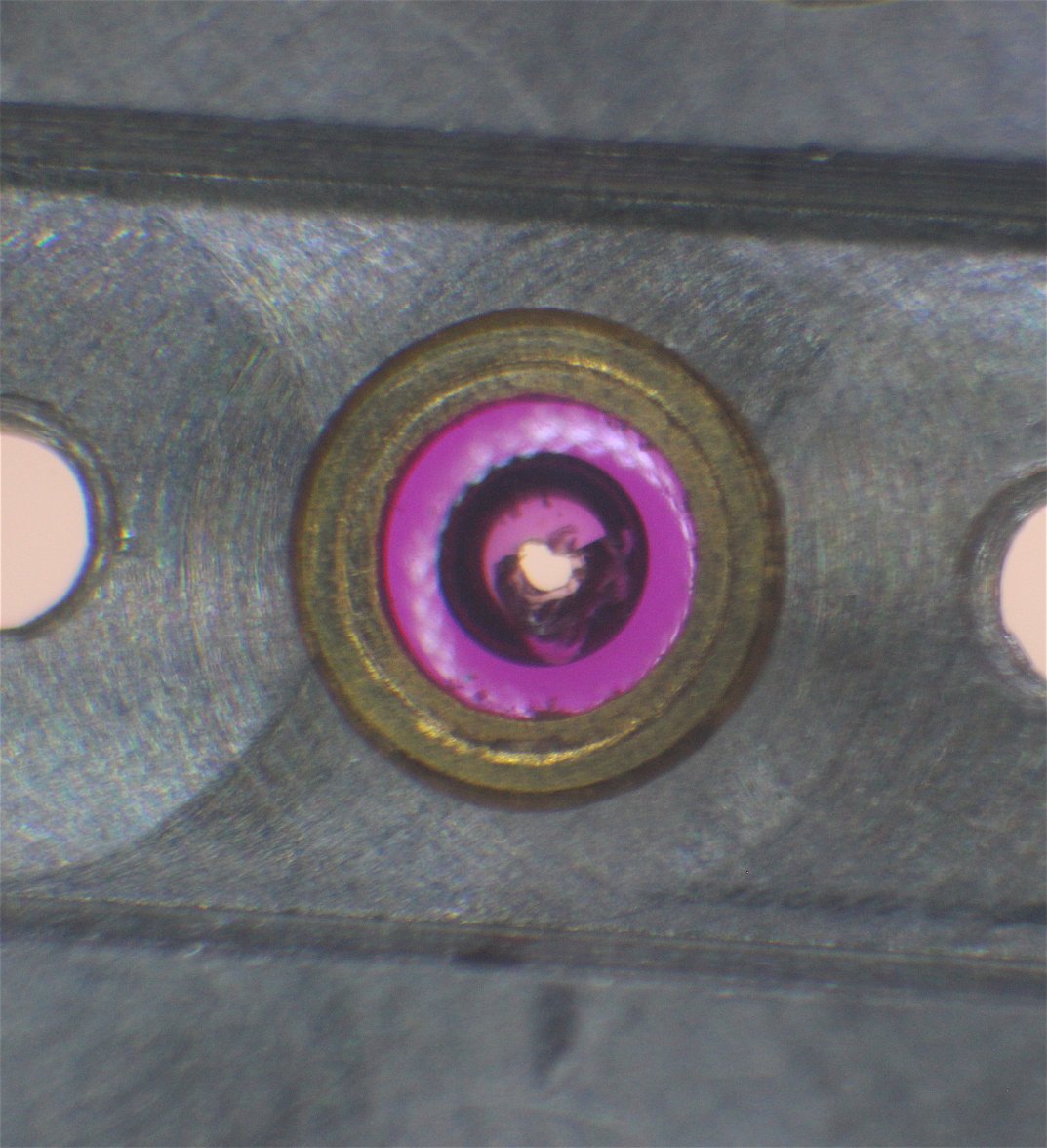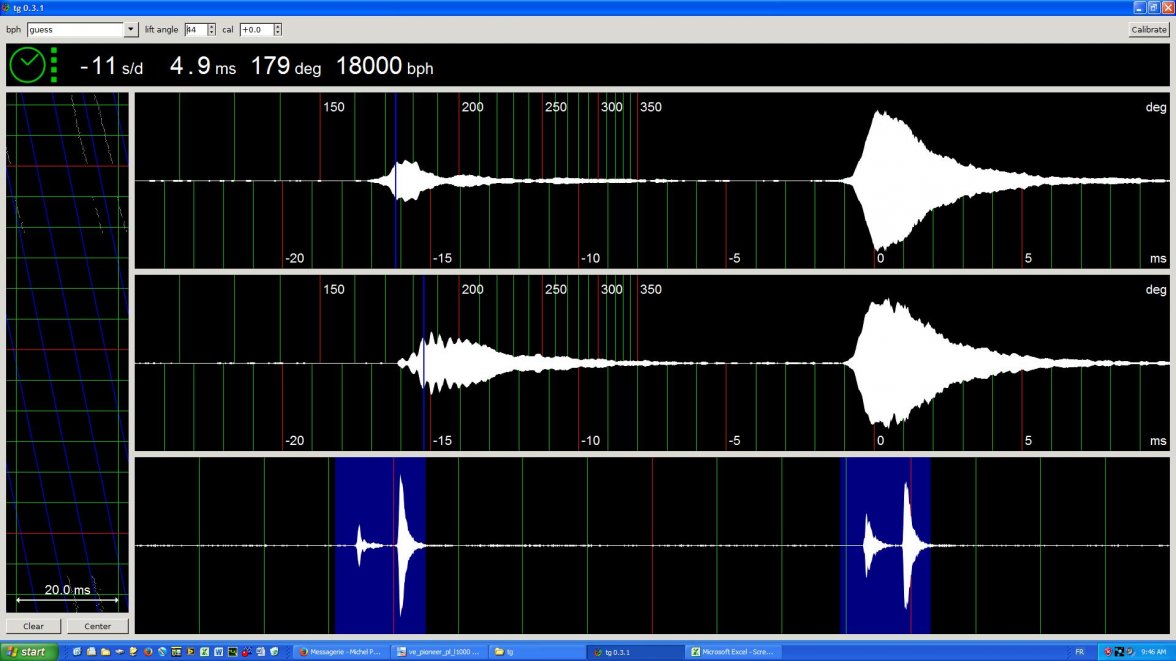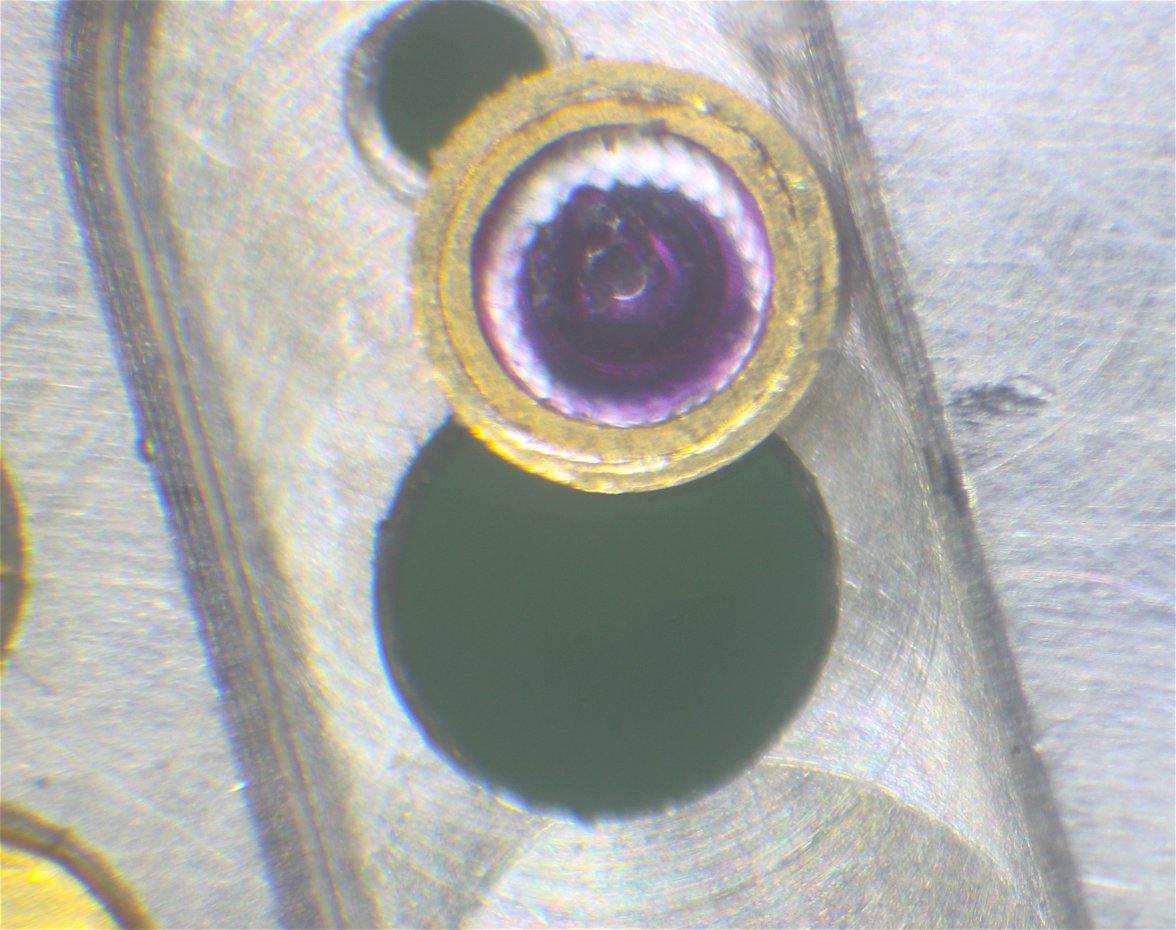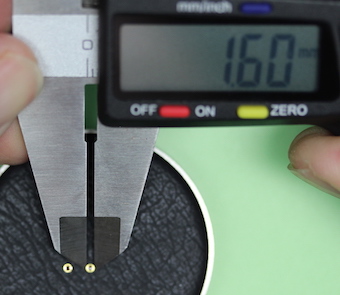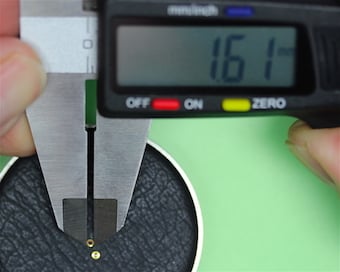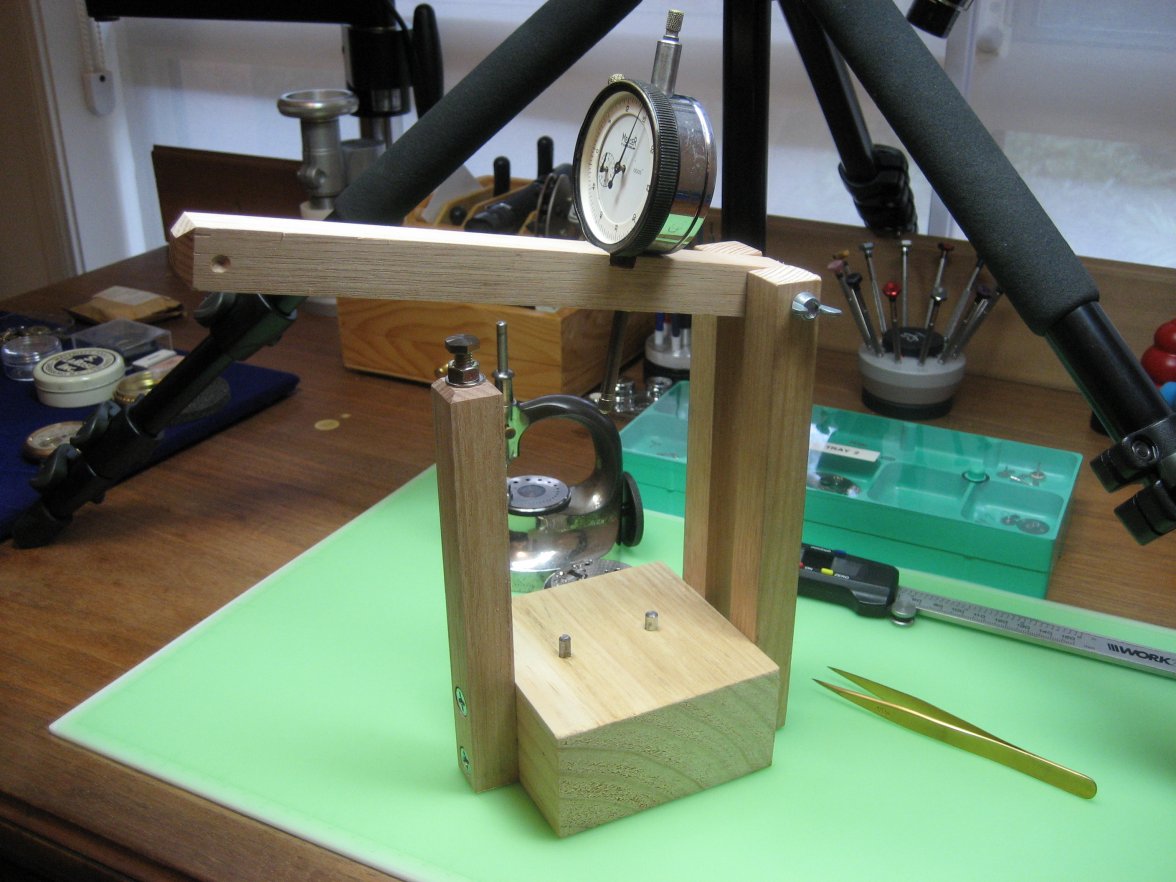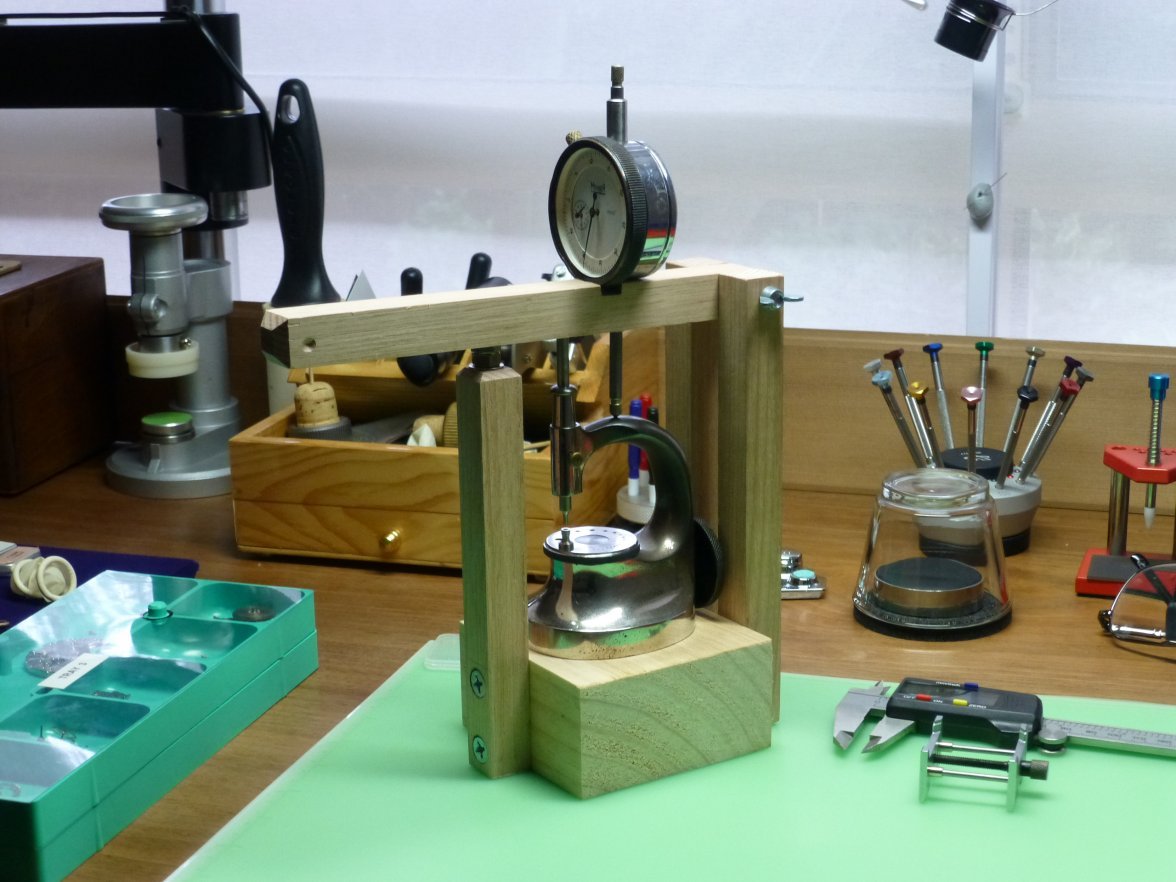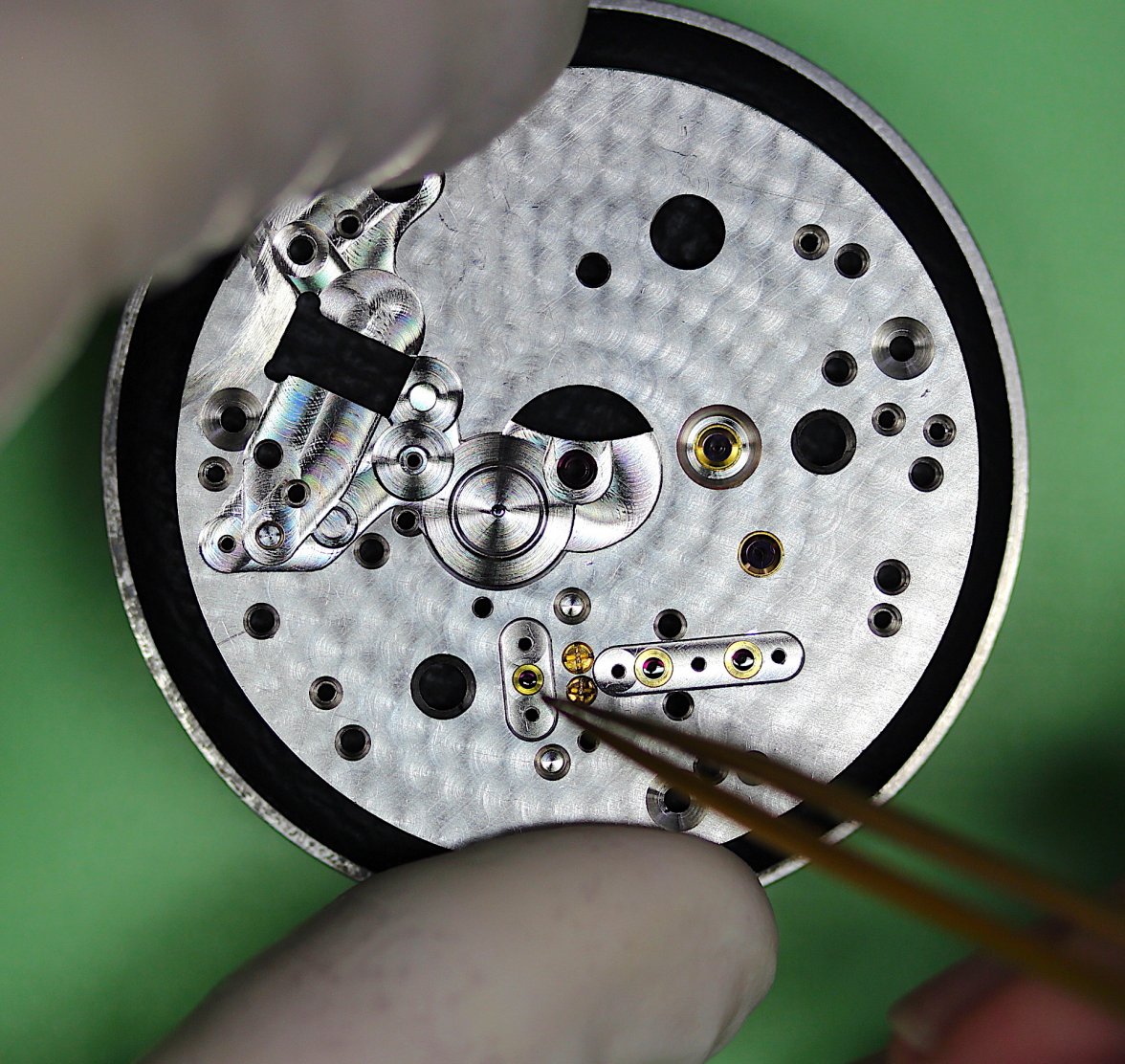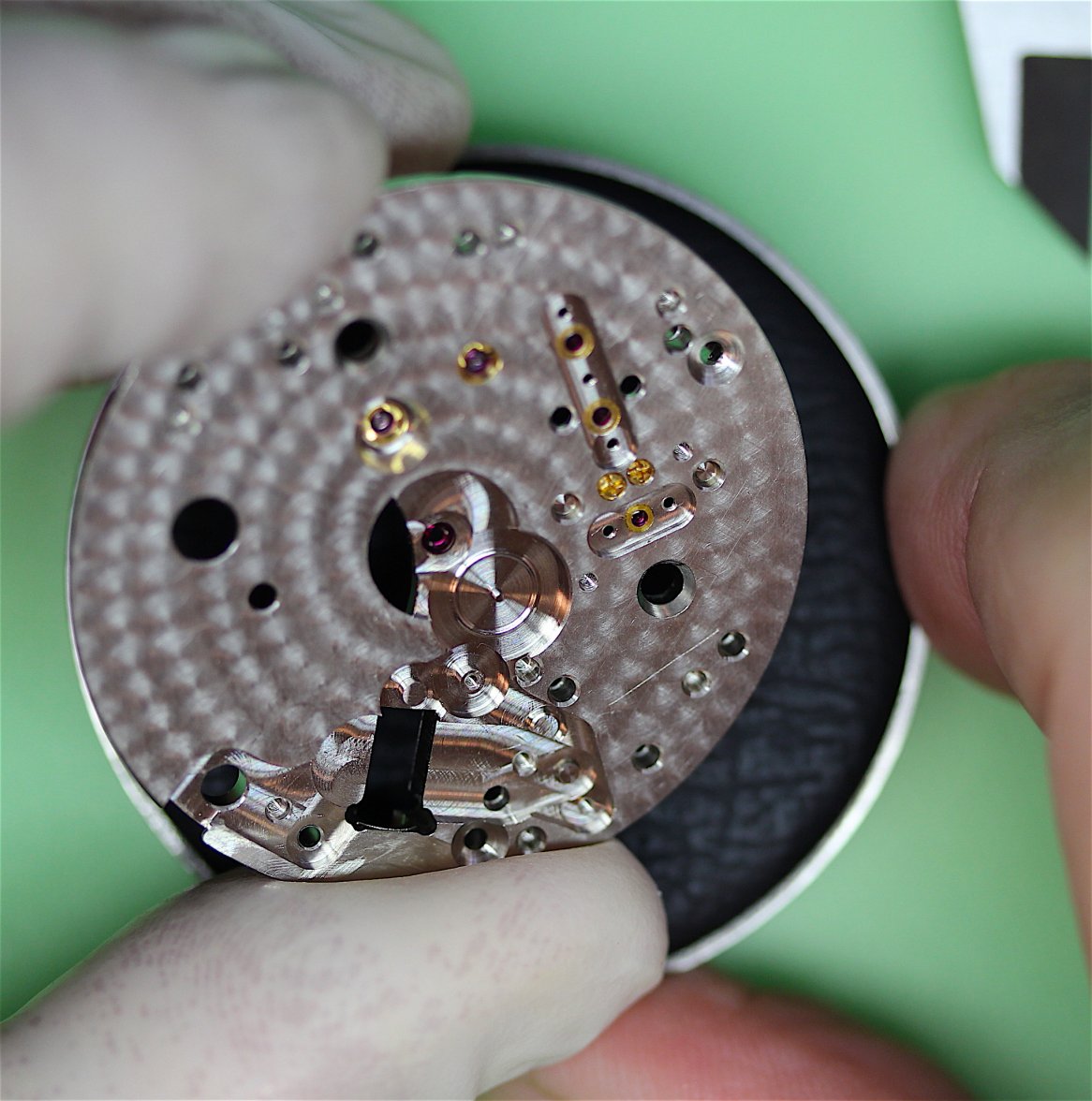JimInOz
··Melbourne AustraliaMy replacement movement arrived from Denver yesterday and aside from a lot of dirt/fibres/old lube it appears to be in reasonable condition except for an incorrect setting lever screw (red arrow). The balance spins freely and has hardly any endshake or sideplay.
Jewels all look fine, although rather dirty and will need a good clean. The Centre Wheel jewel.
The screw heads are in good condition and show slight evidence of past work, and a lot of dirt. This is the ratchet wheel screw.
The dial side again shows a lot of dirt and old lube (or verdigris?)
A close-up of the sub-seconds pivot and surrounds.
Next step is to put it on the timegrapher to see how it performs prior to servicing.
Does anybody know the lift angle for this caliber?
@Canuck ?
Jewels all look fine, although rather dirty and will need a good clean. The Centre Wheel jewel.
The screw heads are in good condition and show slight evidence of past work, and a lot of dirt. This is the ratchet wheel screw.
The dial side again shows a lot of dirt and old lube (or verdigris?)
A close-up of the sub-seconds pivot and surrounds.
Next step is to put it on the timegrapher to see how it performs prior to servicing.
Does anybody know the lift angle for this caliber?
@Canuck ?
